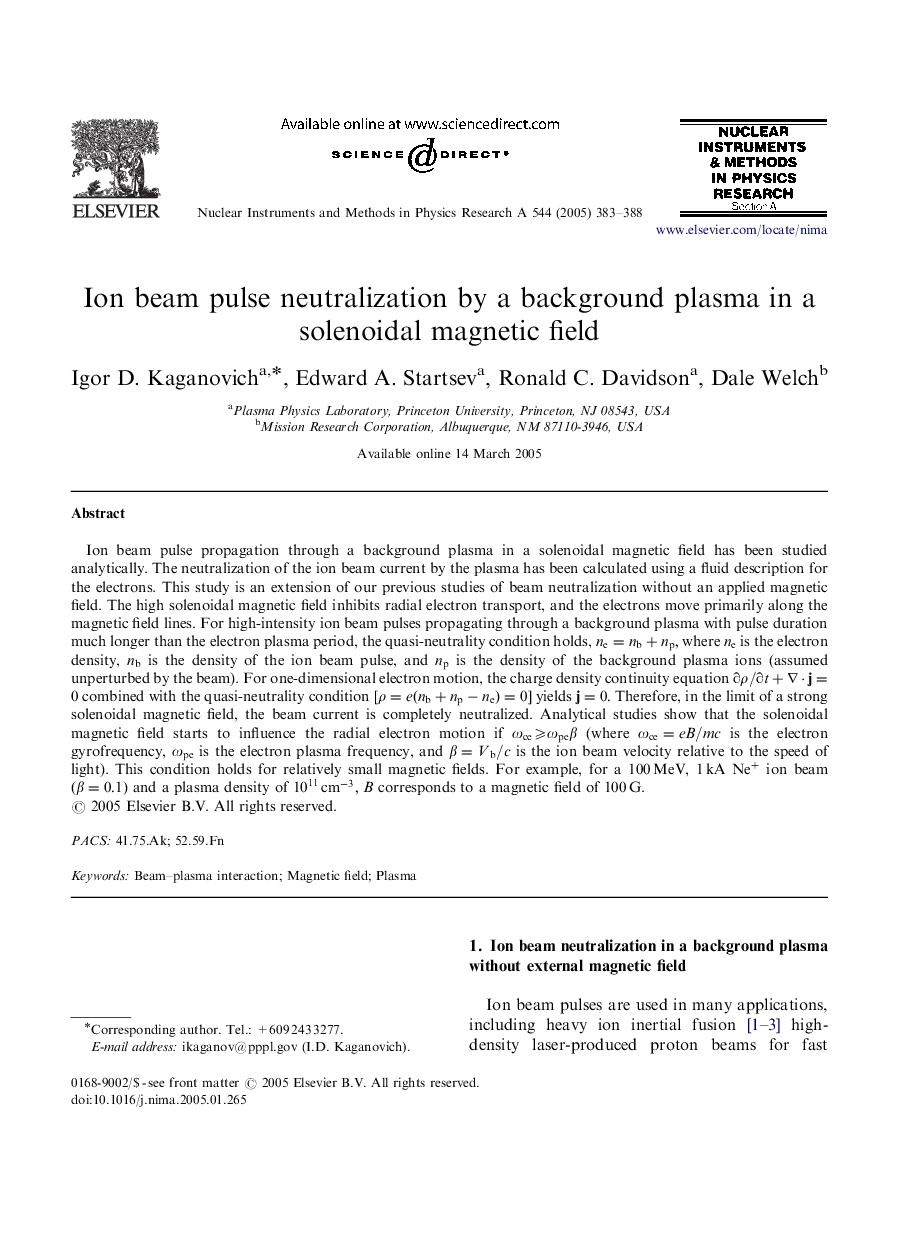| Article ID | Journal | Published Year | Pages | File Type |
|---|---|---|---|---|
| 9845487 | Nuclear Instruments and Methods in Physics Research Section A: Accelerators, Spectrometers, Detectors and Associated Equipment | 2005 | 6 Pages |
Abstract
Ion beam pulse propagation through a background plasma in a solenoidal magnetic field has been studied analytically. The neutralization of the ion beam current by the plasma has been calculated using a fluid description for the electrons. This study is an extension of our previous studies of beam neutralization without an applied magnetic field. The high solenoidal magnetic field inhibits radial electron transport, and the electrons move primarily along the magnetic field lines. For high-intensity ion beam pulses propagating through a background plasma with pulse duration much longer than the electron plasma period, the quasi-neutrality condition holds, ne=nb+np, where ne is the electron density, nb is the density of the ion beam pulse, and np is the density of the background plasma ions (assumed unperturbed by the beam). For one-dimensional electron motion, the charge density continuity equation âÏ/ât+â·j=0 combined with the quasi-neutrality condition [Ï=e(nb+np-ne)=0] yields j=0. Therefore, in the limit of a strong solenoidal magnetic field, the beam current is completely neutralized. Analytical studies show that the solenoidal magnetic field starts to influence the radial electron motion if Ïce⩾Ïpeβ (where Ïce=eB/mc is the electron gyrofrequency, Ïpe is the electron plasma frequency, and β=Vb/c is the ion beam velocity relative to the speed of light). This condition holds for relatively small magnetic fields. For example, for a 100 MeV, 1 kA Ne+ ion beam (β=0.1) and a plasma density of 1011cm-3, B corresponds to a magnetic field of 100 G.
Related Topics
Physical Sciences and Engineering
Physics and Astronomy
Instrumentation
Authors
Igor D. Kaganovich, Edward A. Startsev, Ronald C. Davidson, Dale Welch,
